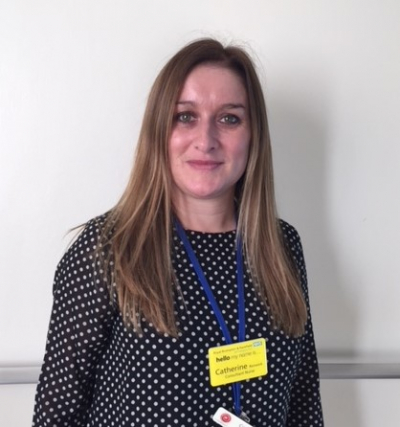11 September 2023
 Congratulations to Catherine Renwick, consultant nurse at Royal Brompton and Harefield hospitals and part of Evelina London Women’s and Children clinical group, who has been awarded a research fellowship to look at evaluating exercise testing and daily physical activity in children with inherited arrhythmic heart conditions.
Congratulations to Catherine Renwick, consultant nurse at Royal Brompton and Harefield hospitals and part of Evelina London Women’s and Children clinical group, who has been awarded a research fellowship to look at evaluating exercise testing and daily physical activity in children with inherited arrhythmic heart conditions.
Doctoral Clinical and Practitioner Academic Fellowships (DCAF) are funded by Health Education England and the National Institute for Health and Care Research. They aim to help develop registered non-medical health care professionals, such as nurses and allied health professionals, in their careers by allowing them to conduct research alongside developing in their professional practice.
Catherine was previously awarded a pre-doctoral clinical academic fellowship, which allowed her to develop her research protocol and gain the necessary skills and experience to successfully apply for a DCAF.
Within our hospitals, Catherine is the first nurse to receive this award, and the third professional to be awarded a DCAF in the last 6 months.
Catherine’s research aims to develop a greater evidence base to guide better exercise prescription practices and better tailored medications for children with inherited arrhythmic heart conditions.
Inherited arrhythmic heart conditions and exercise in children
Inherited arrhythmic heart conditions are a group of genetic disorders that primarily affect the hearts electrical conduction system and mean the heart cannot beat normally.
Exercise tolerance testing (ETT) is a test used to measure how quickly and regularly the heart beats. It involves running on a treadmill to assess how the heart beats during exercise, or stress. The results of the test indicate the best level of daily exercise a person should be taking part in, and how different medicines might affect them.
ETT protocols were originally designed to assess adult heart disease patients but are currently also used in children, with some modifications i.e., shorter tests.
Despite these modifications many children become tired during ETT, which leads to them stopping the exercises early, and they may not complete the full test.
Daily free-living physical activity (PA) is a term used to describe the daily activity patients typically perform or engage in, within their own physical limits, at their own pace, and in their own environment. In children this includes activities such as walking, cycling and participating in physical education at school.
Children naturally increase exercise effort during daily free-living PA and therefore may show a more accurate representation of the maximum heart rate children can achieve.
However, there is no strong evidence to determine whether this is the case.
The research
Catherine’s research aims to compare ETT and daily free-living PA to assess whether the maximum heart rates achieved, differ. She also aims to identify which specific exercise protocols for children are better at estimating maximum heart rate.
Alongside this, Catherine will also investigate the actual versus reported level of PA children engage in and whether this exceeds current exercise recommendations.
The study aims to recruit children aged 6-16 years diagnosed with an inherited arrythmia, plus a healthy control group, such as unaffected siblings.
Catherine shared her hopes for the study. She said:
“I hope my research will have many benefits for our patients including evidence to support the most appropriate and tailored exercise testing for children with inherited arrythmias, as well as how best to adjust their daily medication and to provide consistent, safe exercise prescription.
“There is a growing body of evidence suggesting that we are over-restricting patients in their daily physical activity, so the research will add to this body of evidence.”
Catherine was pleased with the funding and said:
“I am delighted to have been successful with my DCAF funding application. I’m excited and a little nervous but I am looking forward to being able to start establishing a patient group to support the study, recruiting patients and starting the study.”
To find out more about our research, please contact us.
Read more of our research stories or sign up to our research newsletter.
